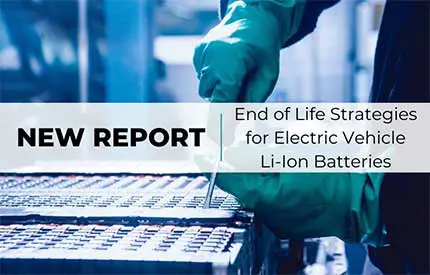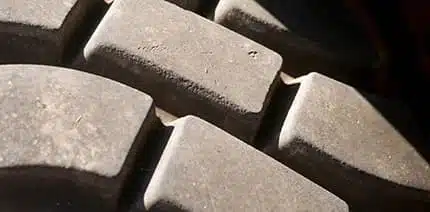Exploring the Ways of Recovering and Maximising EV Battery Value in HSSMI’s Latest Report
The increased pressure to move away from fossil fuels and internal combustion engines is driving the mass introduction of electric vehicles (EV) and their associated, predominantly lithium-ion, batteries (LIBs). Due to their hazardous nature, batteries pose a challenge when they reach their end of life (EoL).
With around 6 million batteries expected to retire from EVs globally in 2030, Original Equipment Manufacturers (OEMs) must act sooner rather than later in preparation for this wave of responsibility. Nevertheless, as EV LIBs will retire from transport applications when they reach 70-80% capacity, there is still a tremendous opportunity for OEMs to cascade this value into new functions and eventually recover the valuable materials these batteries are made from.
The circular economy concept presents itself as an interesting framework for approaching the EoL decision making process, with the aim of maximising the recovery of a product’s inherent value. Unfortunately, today’s EV LIB designs lead to destructive disassembly methods, thus making any attempt to rework the battery, and recover its value, a complicated process. Since modifications to a product and its process are difficult to implement once decided, OEMs are first encouraged to thoroughly evaluate EoL already in the design stage.
Still, there are many opportunities to recover and maximise product value with the existing battery designs through reusing, refurbishing, remanufacturing, repurposing, and recycling. They all have their associated benefits and challenges related to, for example, cost and complexity, and need to be closely evaluated by the OEM in order to make a decision. There are also numerous considerations involved in the decision-making process that will likely impact which strategy or combination of strategies an OEM will prefer.
Aside from the level of circularity, the state of health is identified as one of the most important determinants in making a decision. Based on these two considerations, we can offer a strategic decision tree to guide the decision (as illustrated below).
The overall recommendation, however, is that the least technologically and financially risky option is repurposing EoL LIBs for secondary stationary storage applications. This recommendation is based on the reduction in complexity in dealing with the accessibility of the battery and the growing demand for energy storage units across the UK.
This work is based on HSSMI’s experience gathered through multiple electrification projects and research work being undertaken by other companies and organisations. HSSMI actively promotes circular economy practices in the manufacturing industry and this white paper is aimed as a guide to enhance the life-cycle strategic decision-making of companies.
It covers the EoL strategies, market and product considerations such as volume predictions, reliability, regulations and others, and concludes with the presentation of a strategic decision tree and recommendations to support the industry in its transition towards a circular approach to reduce cost and environmental impact.
To download the full report from the HSSMI website at www.hssmi.org
To find out more go to www.hssmi.org












